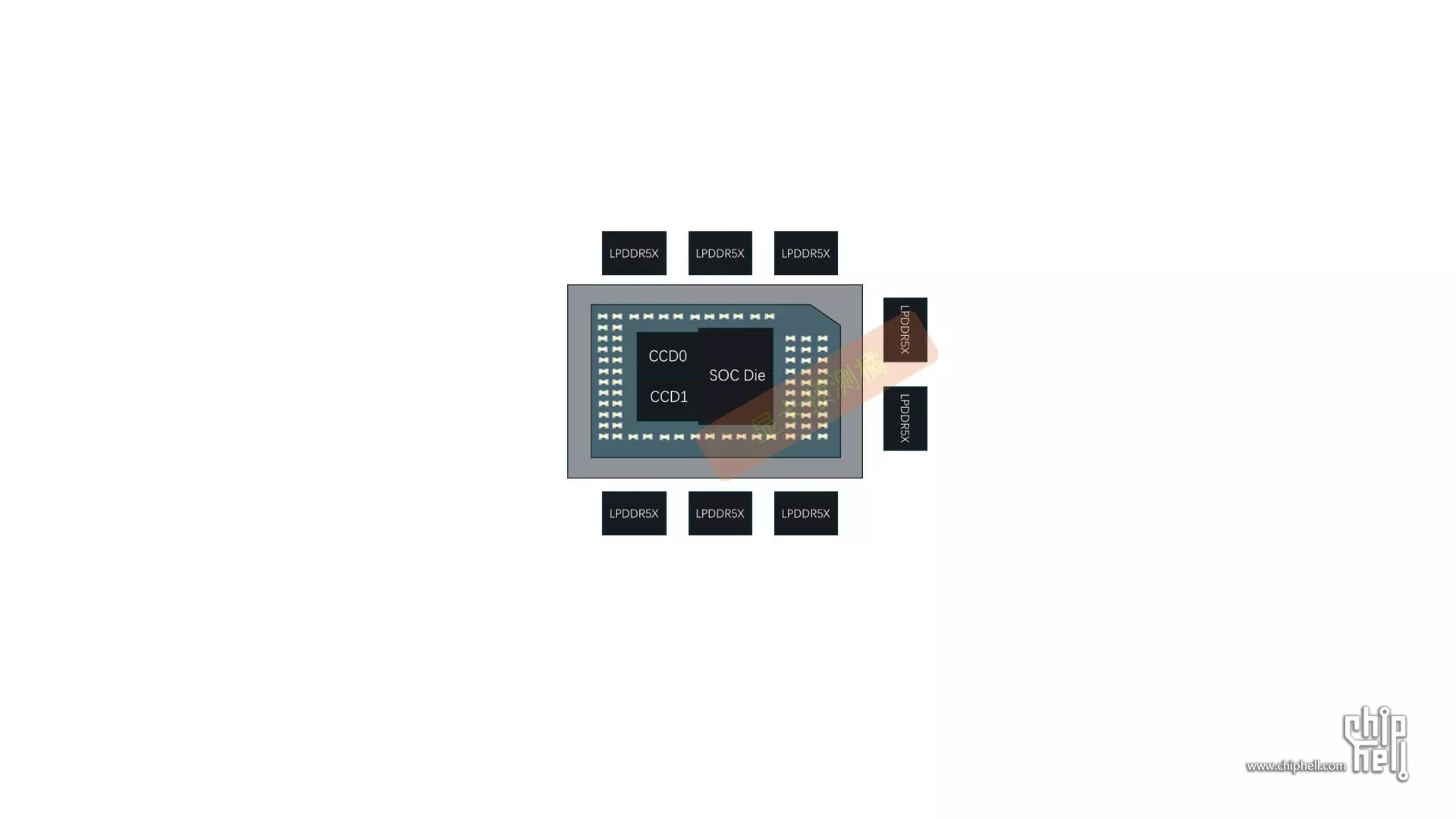AMD’s Strix Halo mobile APUs will be very impressive in every way. The novelties include a powerful CPU section, a high-performance iGPU section, and a powerful NPU, giving new impetus to the ultraportable laptop segment, offering serious performance both in terms of processor cores and iGPU. The mobile APUs built on a chiplet architecture come in a BGA package, but this will take up much more space than the FP8 BGA package used in the Strix Point, Hawk Point, and Phoenix APUs. The Strix Halo gets an FP11 case, which is 37.5mm tall and 45mm wide, which is much larger than the FP8, which is just 25mm tall and 40mm wide. The Strix Halo case could be as big as an Intel desktop LGA-1700 processor.
Basically, we can expect one or two CCDs, depending on the model, a relatively large microchip attached to the chip it houses, which could technically be considered a cIOD chip, but it also houses a massive NPU and iGPU in addition to the usual components. In the case of the Strix Halo, it’s not yet clear what kind of production technology this I/O chip was made with, but it’s very likely that 6nm bandwidth wasn’t used during its production, as it has components with a fairly complex 6nm bandwidth architecture. It wouldn’t be too surprising if 4nm bandwidth played a role here, just as it did with the Phoenix chip, but that’s just an assumption for now.
The I/O chip itself hides a massive iGPU, which has a total of 40 CUs, which have a total of 2,560 stream units, which are also linked to 80 AI accelerators and 40 RT accelerators. Built around the RDNA 3.5 GPU microarchitecture, the iGPU will replace the dGPU, or video card, which opens up a new opportunity for ultraportable laptops. By replacing the dGPU in the performance category, valuable space can be freed up for other purposes, and it also helps reduce the thickness of the notebook.
The greatness of the iGPU on board the Strix Halo is perfectly illustrated by the fact that the iGPU with only 16 CUs, i.e. 1024 stream units, serves the Strix Point models. By the way, the chip also features an XDNA 2-based NPU, which is expected to be carried over from the Strix Point series by the manufacturer, so we can expect performance of up to 50 TOP, which is more than enough for products equipped with it to meet the minimum system requirements of the Copilot+ PC class.
At the moment, it’s a mystery how the memory subsystem is resolved in the case of a massive mobile APU. This is especially important now, since both the processor cores, the giant iGPU, and the NPU all need the right amount of memory bandwidth to be able to operate at their full potential, otherwise there’s little point in firepower if memory—as it is a weak cross-section—is throttling performance.
Essentially, the problem could be solved by using onboard LPDDR5X memory for the processor section, while the iGPU will receive dedicated onboard GDDR6 memory, even if only a 128-bit data bus is used. The latter, combined with 20Gbps GDDR6 memory chips, will provide a memory bandwidth of 320GB/s, which could be more than enough for an iGPU, if only because the iGPU also has 32MB of Infinity Cache. Incidentally, this confirms the suggestion that GDDR6 VRAM will also be available, but this can only be confirmed by subsequent leaks.












































